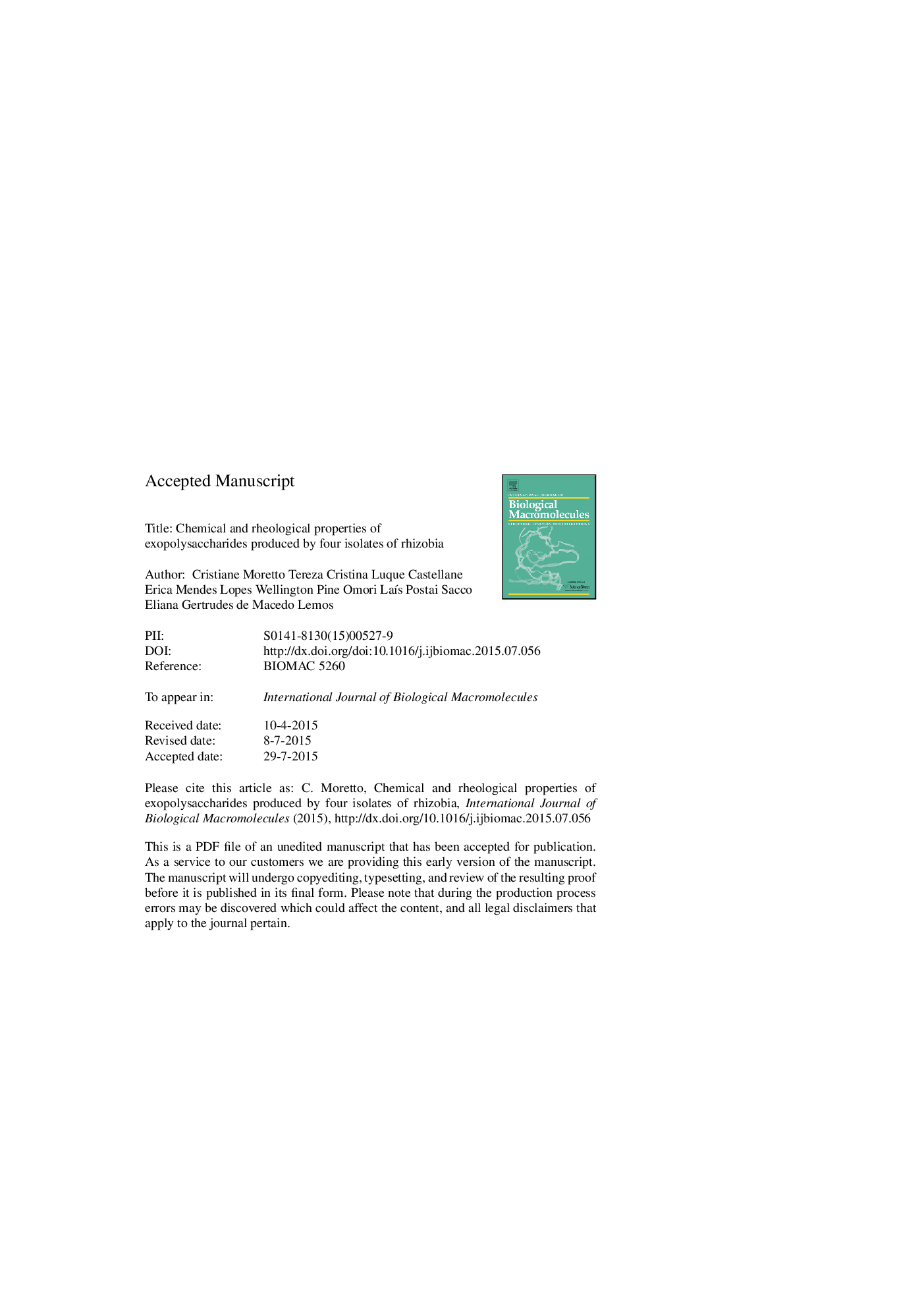| Article ID | Journal | Published Year | Pages | File Type |
|---|---|---|---|---|
| 8330230 | International Journal of Biological Macromolecules | 2015 | 34 Pages |
Abstract
The rheological, physicochemical properties, emulsification and stability of exopolysaccharides (EPSs) from four rhizobia isolates (LBMP-C01, LBMP-C02, LBMP-C03 and LBMP-C04) were studied. The EPS yields of isolates under these experimental conditions were in the range of 1.5-6.63 g Lâ1. The LBMP-C04 isolate, which presented the highest EPS production (6.63 g Lâ1), was isolated from Arachis pintoi and was identified as a Rhizobium sp. strain that could be explored as a possible potential source for the production of extracellular heteropolysaccharides. All polymers showed a pseudoplastic non-Newtonian fluid behavior or shear thinning property in aqueous solutions. Among the four EPS tested against hydrocarbons, EPS LBMP-C01 was found to be more effective against hexane, olive and soybean oils (89.94%, 82.75% and 81.15%, respectively). Importantly, we found that changes in pH (2-11) and salinity (0-30%) influenced the emulsification of diesel oil by the EPSs. EPSLBMP-C04 presented optimal emulsification capacity at pH 10 (E24 = 53%) and 30% salinity (E24 = 27%). These findings contribute to the understanding of the influence of the chemical composition, physical properties and biotechnology applications of rhizobial EPS solutions their bioemulsifying properties.
Keywords
CDWPMPE24EPS1-phenyl-3-methyl-5-pyrazoloneRHAFucGlcAFucoseRP-HPLCGlcUV–VisGalacturonic acidGlucuronic acidUltraviolet–visibleExopolysaccharideBioemulsifierrhamnoseRhizobiumBiopolymersEmulsification indexMannoseMancell dry weightreverse phase high-performance liquid chromatographyGalGalAGalactoseGlucose
Related Topics
Life Sciences
Biochemistry, Genetics and Molecular Biology
Biochemistry
Authors
Cristiane Moretto, Tereza Cristina Luque Castellane, Erica Mendes Lopes, Wellington Pine Omori, LaÃs Postai Sacco, Eliana Gertrudes de Macedo Lemos,
